Whether you’re in the wilderness or on the couch, you’re never that far away from a spider. Happily, most of the approximately 40,000 world-wide spider species are harmless to humans. However, the most venomous spiders in the world can do real damage. A bite from one could even kill you. In this article I’ll rank the 10 most dangerous spiders in the world and provide photos of their bites (graphic image warning).
I based the rankings on how common the spider is, how aggressive it is, and how deadly its venom is to humans. While everyone’s immune system reacts differently to a spider bite (symptoms can range anywhere from pain and nausea to death), we should all be cautious of the following arachnids.
Brazilian Wandering Spider
The Brazilian Wandering Spider
The Brazilian Wandering Spider is a large brown spider similar to North American Wolf Spiders, but bigger and possessing a more toxic venom (consider it one of the most venomous spiders out there). It has the most neurologically active venom of all spiders, and is regarded as the most dangerous spider in the world. Brazilian Wandering Spiders are active hunters and travel a lot. They tend to crawl into cozy, comfortable places for the night and sometimes crawl into fruits and flowers that humans cultivate and consume. If the spider has a reason to be alarmed, it will bite in order to protect itself. But unless startled or aggravated, most bites will be delivered dry (without venom). Venom bites will occur if the spider is pressed against something or injured. In this case, the high levels of serotonin contained in the venom will deliver a very painful bite that can result in muscle shock.
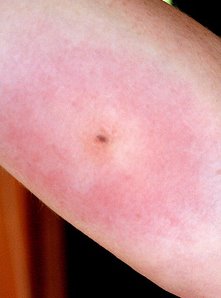
Occasional deaths have occurred even after antivenin treatment. Children are more sensitive to the bites of wandering spiders, as the spiders often make threat gestures (such as raising up their legs, or hopping sideways on the ground), which might entice a curious child. Children have weaker immune systems, and even if antivenom is quickly administered, death can occur within minutes after the bite.
Black Widow Spider
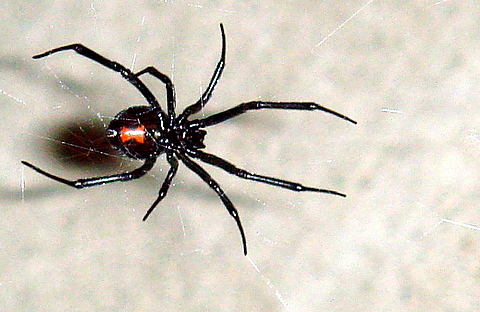
The Black Widow Spider
Black widows are notorious spiders identified by the red, hourglass-shaped mark on their abdomens. Several species answer to the name, and they are found in temperate regions around the world. Approximately 5 percent of the reported bites were fatal prior to the invention of Widow spider antivenin. One of their favorite haunts is an old fashioned outhouse. Sixty-three deaths were reported in the United States between 1950 and 1959, most of which occurred in or around a woodpile or outhouse. But with the modernization of home plumbing and heating, black widow bites are now rare.
The Black Widow Spider Bite
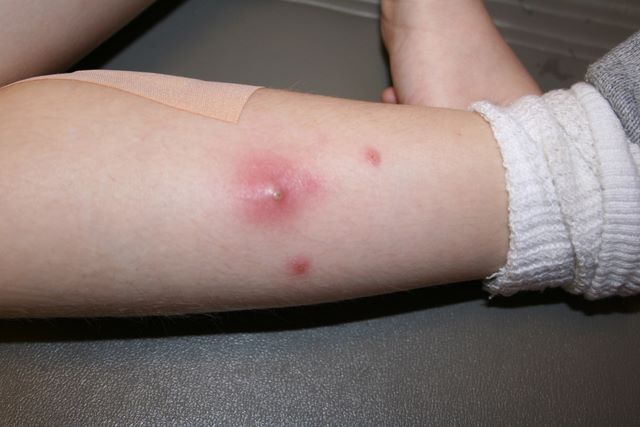
This spider’s bite is much feared because its venom is reported to be 15 times stronger than a rattlesnake’s. In humans, bites produce muscle aches, nausea and a paralysis of the diaphragm that can make breathing difficult; however, contrary to popular belief, most people who are bitten suffer no serious damage—let alone death. But bites can be fatal, usually to small children or the elderly. Fatalities are fairly rare. The spiders are nonaggressive and bite only in self-defense, such as when someone accidentally sits on them.
Brown Widow Spider
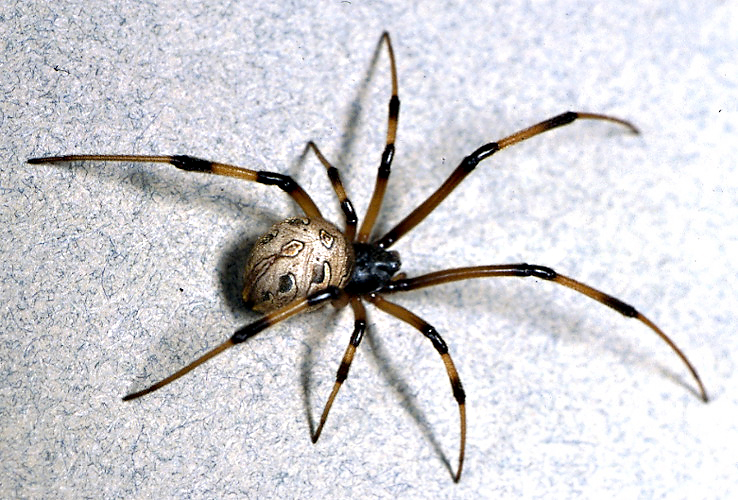
The Brown Widow Spider
The brown widow spider—like its cousins the black widow, red back spider, and katipo—carries a neurotoxic venom which can cause a set of symptoms known as Latrodectism. Like many spiders, widows have very poor vision, and they move with difficulty when not on their web. The brown widow spiders have relatively spindly legs and deep, globular abdomens. The abdomen has one or several red spots, either above or below. The spots may take the form of an hourglass, or several dots in a row. The male widows, like most spider species, are much smaller than the females and may have a variety of streaks and spots on a browner, less globular abdomen. The males are generally less dangerous than the females, but will bite if the web is disturbed and the spider feels threatened.
The Brown Widow Spider Bite
The venom of a brown widow, while seldom life-threatening, produces very painful effects including muscle spasms, ‘tetanus-like’ contractions and, in some cases, spinal or cerebral paralysis. This paralysis is generally temporary, but might leave permanent damage to central nervous system. A serious bite will often require a short hospital stay. Children, elderly, and ill individuals are at most risk of serious effects.
The Brown Recluse Spider
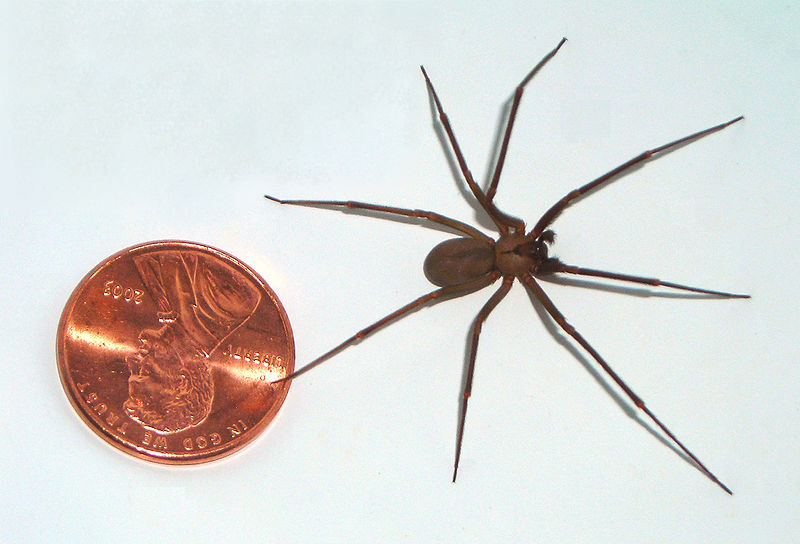
Brown Recluse Spider
The brown recluse spider, also known as “violin spiders,” “fiddlers,” or “fiddlebacks,” from the dark violin-shaped marking on the head, are slow-moving, retiring spiders that wander about in dim areas. They often den in footwear, clothing and beds, and are then easily trapped against someone’s skin by clothing, bed sheets, etc. – leading to the spider’s bite.
Most encounters with this spider occur from moving boxes or rooting about in closets or under beds. The range of the Brown Recluse in the US is mostly restricted to the Midwest, South and Southeast. However, a number of related recluse spiders (some non-native introductions) are found in southern California and nearby areas.
The Brown Recluse Spider Bite
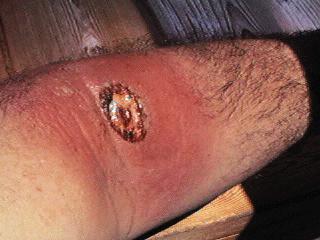
The bite of a brown recluse is extremely venomous, and has led to fatalities through massive tissue loss and the subsequent infection. Deaths from brown recluse spiders have been reported only in children younger than seven years.
Six-Eyed Sand Spider
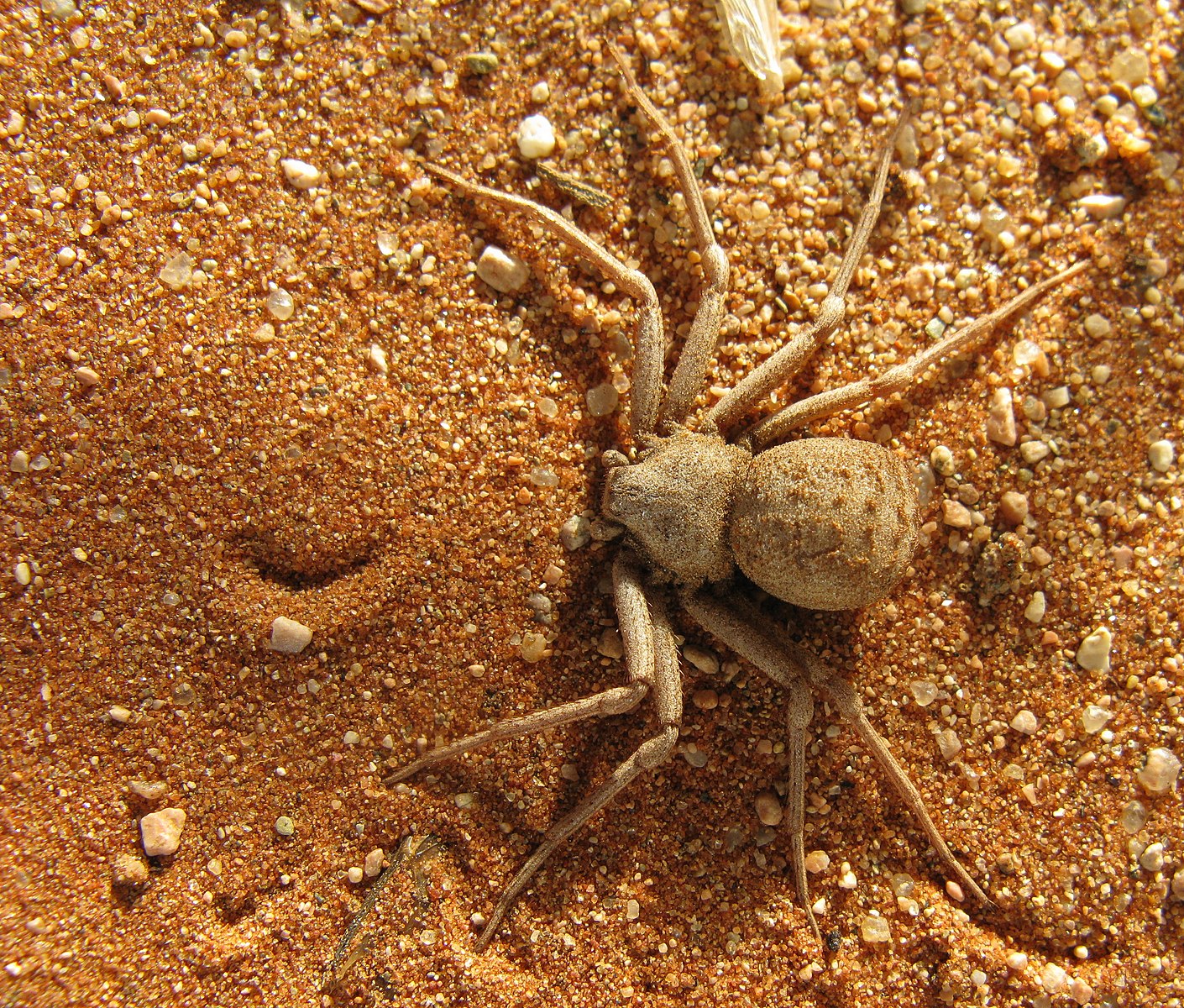
The six-eyed sand spider is a medium-sized spider with body measuring 1 to 2 inches and legs spanning up to 4 inches. It is found in deserts and other sandy places in southern Africa with close relatives found in both Africa and in South America. The six-eyed sand spider is a cousin to the recluses which are found worldwide. Due to its flattened stance, it is also sometimes known as the six-eyed crab spider. Bites by this spider to humans are uncommon, but have been experimentally shown as lethal to rabbits within 5 to 12 hours.
The Six-Eyed Sand Spider Bite
There are no confirmed bites and only two suspected ones on record. However, in one of these cases, the victim lost an arm to massive necrosis and in the other, the victim died of massive hemorrhaging, similar to the effects of a rattlesnake bite. Toxicology studies have demonstrated that the venom is particularly potent, with a powerful hemolytic/necrotoxic effect, causing blood vessel leakage, thinning of the blood, and tissue destruction.
Chilean Recluse Spider
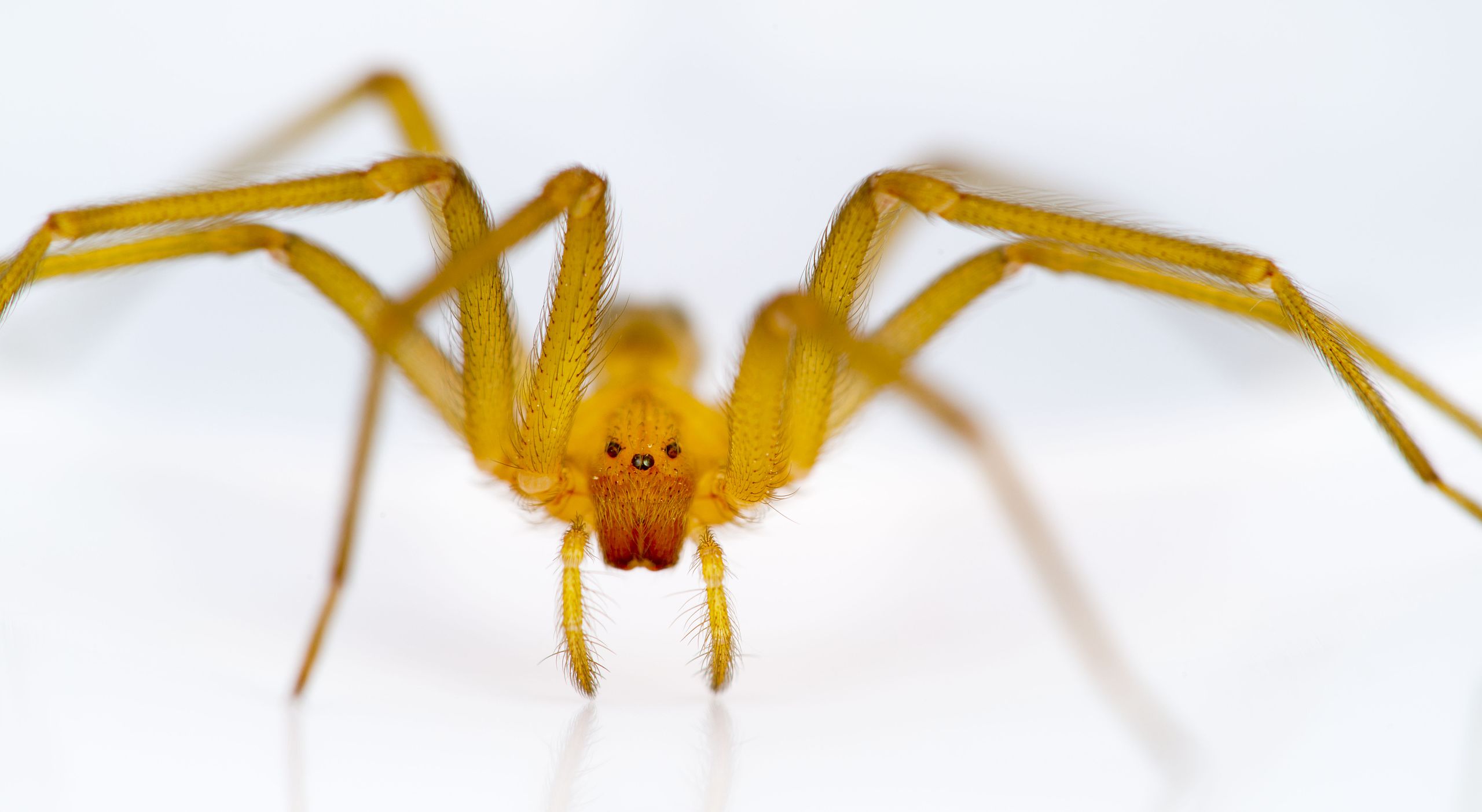
The Chilean recluse spider is one of the most venomous spiders on the planet and is closely related to the brown recluse spider. In Spanish, it (and other South American recluse spiders) is known as araña de rincon, or “corner spider”; in Portuguese, as aranha-marrom or “brown spider.” This spider is considered by many to be the most dangerous of the recluse spiders, and its bite is frequently results in severe systemic reactions, including death.
The Chilean Recluse Spider Bite
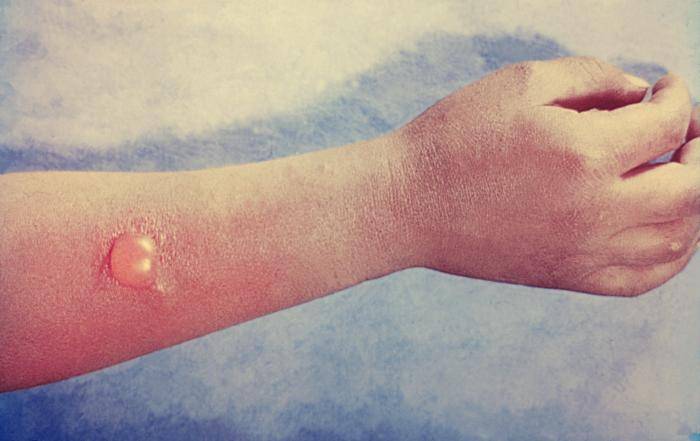
As suggested by its name, this spider is not aggressive and usually bites only when pressed against human skin, such as when putting on an article of clothing. Like all recluse spiders, the venom of the Chilean recluse contains the dermonecrotic agent, which is otherwise found only in a few pathogenic bacteria. Some bites are minor with no necrosis, but a small number of bites have produced severe dermonecrotic lesions or even systemic conditions sometimes resulting in renal failure. In about 4 percent of cases in a clinical study in Chile, the victims died.
Northern Funnel Web Spider
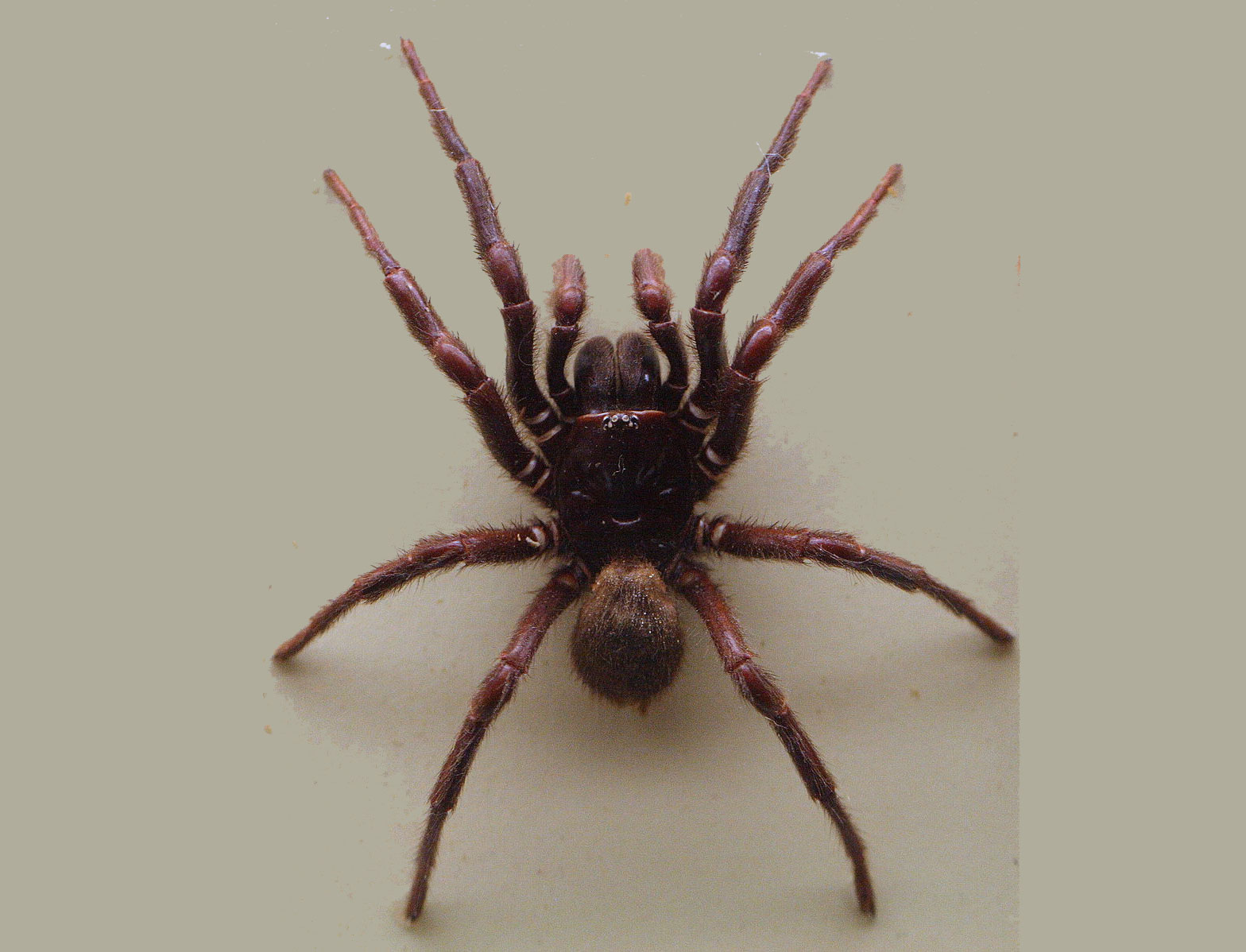
The northern funnel web spider of Australia is the largest of this genus, reaching sizes over three inches long. It is most easily distinguished by its habit of dwelling in trees. These spiders are attracted to water, and often fall into swimming pools, leading to encounters with homeowners trying to scoop them out of the water.
The Northern Funnel Web Spider Bite
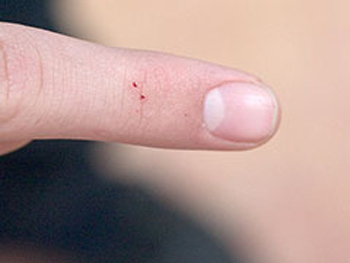
Northern Funnel Web Spider Bite
The venom from all Funnel Web Spider species can kill a human within minutes, if no antivenom is available. This makes the Funnel Web Spider one of the most poisonous spiders in the world.
Sydney Funnel Web Spider
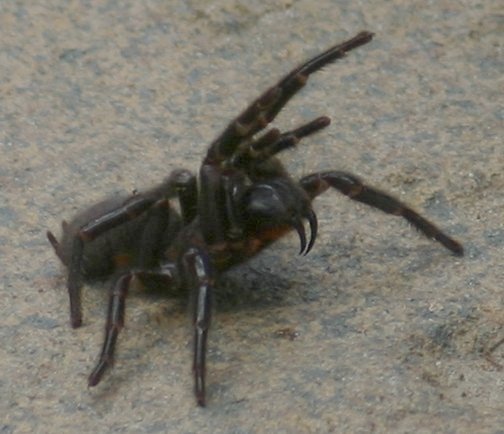
Sydney Funnel Web Spider
This eastern Australian native spider is one of the most feared of the venomous animals down under. They are typically 1 to 3 inches long, and can be very aggressive when provoked. The long-lived female funnel webs spend most of their time in their silk-lined tubular burrow retreats. The males tend to wander during the warmer months of the year looking for receptive females. The Sydney funnel web spider is responsible for 13 confirmed deaths between 1927-1980.
The Sydney Funnel Web Spider Bite
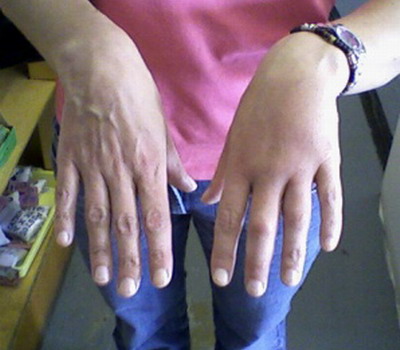
Sydney Funnel Web Spider Bite
Sydney funnel web spider venom contains a compound known as atracotoxin, a highly toxic ion channel inhibitor. These spiders typically deliver a full envenomation when they bite, often striking repeatedly, due to their aggression and their large fangs. For this reason, people are strongly advised not to approach them. Chances of being bitten are high if encountered. There is at least one recorded case of a small child dying within 15 minutes of a bite from a Sydney funnel web spider. For very small children the amount of venom dispersed throughout the body is many times the concentration in an adult. Since the antivenom was developed in 1980, there have been no recorded fatalities from Sydney funnel web spider bites.
Wolf Spider
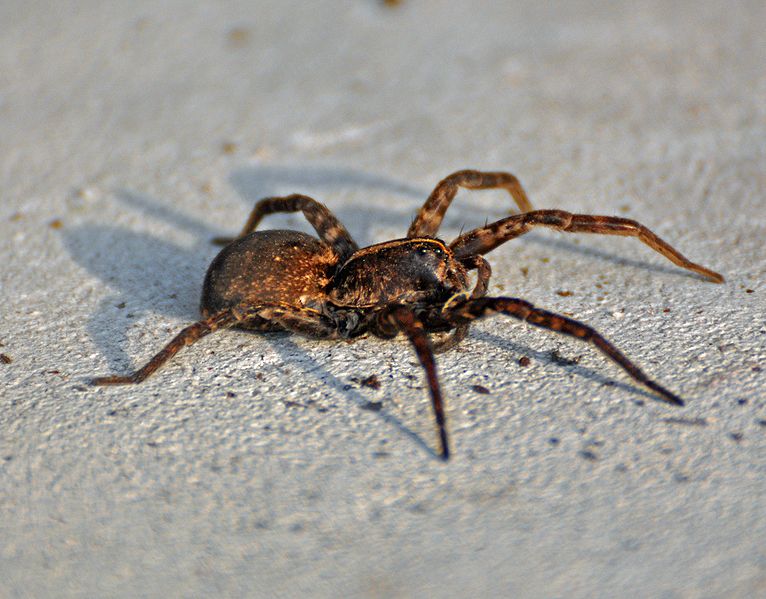
Wolf Spider
The wolf spider is a member of the Lycosidae family, and there are around 125 species found in the U.S., and about 50 species found in Europe. A full grown wolf spider is typically a half an inch to two inches in length. They are hairy and are usually brown or gray with various stripe-like markings on their backs. The eye arrangement of the wolf spider is one of its most interesting features, with four small eyes in the bottom row, followed by two large eyes in the middle row, and two medium eyes in the top row. They received the name wolf spider due to an early belief that the spiders would actually hunt their prey in a group. Some other names for the wolf spider are the ground spider and the hunting spider. Wolf spiders do not make webs, but actively hunt for their prey.
The Wolf Spider Bite
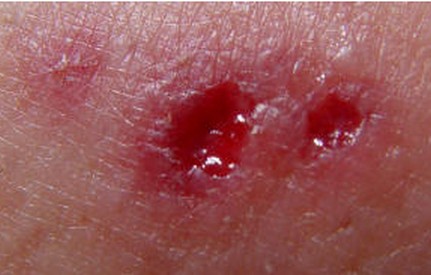
Wolf Spider Bite
Even though the wolf spider is poisonous, it’s not the most venomous spider on the list. Despite its name, this spider is not known to be aggressive and usually only bites when threatened. Wolf spiders move extremely fast when disturbed. If bitten by a wolf spider, the wound should not be bandaged. Place an ice pack on the bite to reduce swelling. If necessary, the victim should avoid any movement or increased heart rate. Seek medical attention if bitten by a wolf spider.
Red Widow Spider
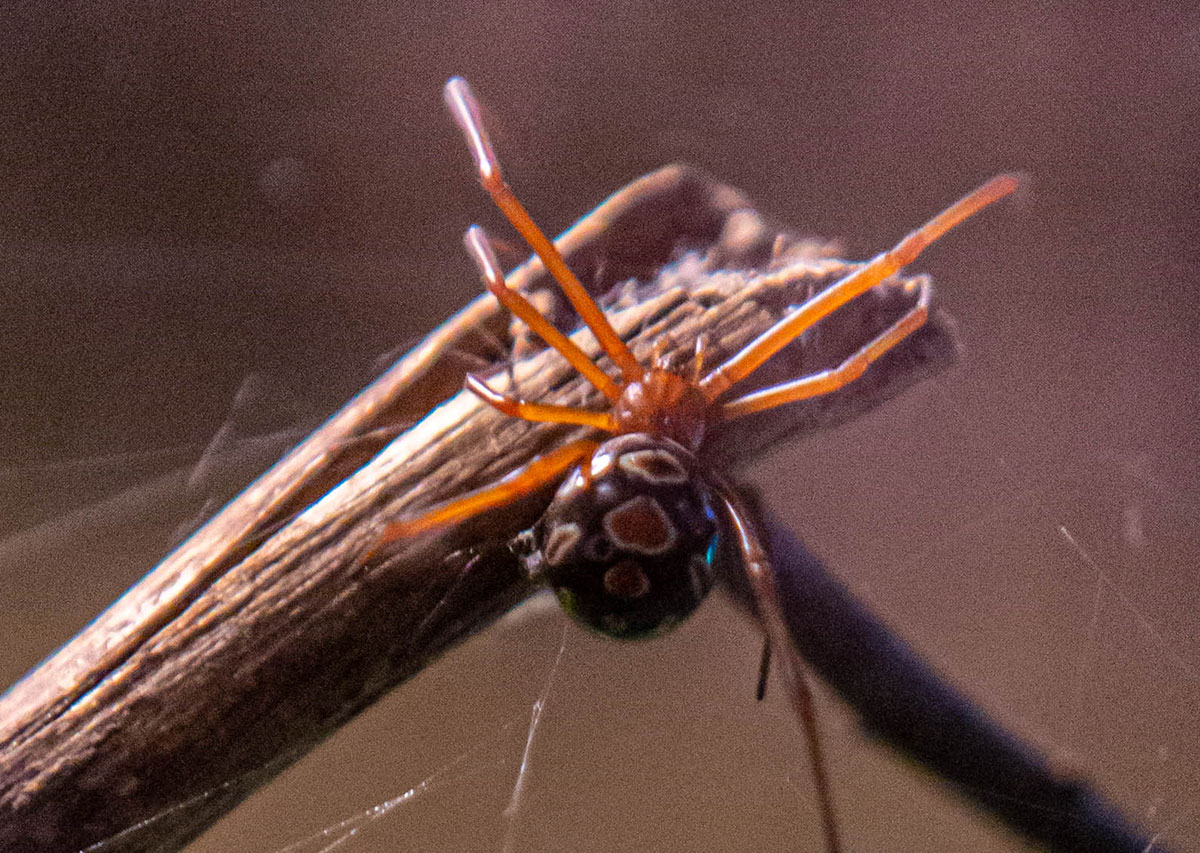
The red widow is a rare spider. It’s a member of the black widow family and highly venomous. According to all literature, this spider is indigenous to south and central Florida. This colorful spider is less than an inch long, but packs the same type of venom as its other widow relatives.
READ NEXT: Top 10 Venomous Snakes to Look Out for on a Hunting Trip
The Red Widow Spider Bite
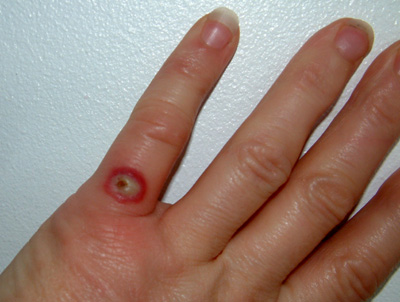
Red Widow Spider Bite
Bite symptoms are systemic, spreading through the lymphatic system, and usually start about 1-3 hours after the bite. The most common symptoms are intense pain, rigid abdominal muscles, muscle cramping, malaise, local sweating, nausea, vomiting, and hypertension. If left untreated, Latrodectus bite symptoms usually last 3-5 days.
Questions on the Most Venomous Spiders
Can a Black Widow Kill You?
According to the National Institute of Health: “Severe symptoms [from a black widow spider bite] usually start to improve within 2 to 3 days, but milder symptoms may last for several weeks. Death in a healthy person is very rare. Young children, people who are very ill, and older people may not survive a bite.”
Because of this, the black widow spider is number two on this list, and can be found throughout most of North America. My home county in Virginia is no exception. These vile little arachnids produce a protein venom that affects the victim’s nervous system. There are worse spiders and more venomous animals in the world, to be sure. But they aren’t hanging around in my woodpile, or trying to nest in my gloves.
My grandfather almost died of a black widow bite many years ago. My grandparents had an outhouse, and a favorite haunt of spiders is under the seat in these quaint commodes. A bite on the butt led to a severe reaction that almost killed him. Some people are only slightly affected by the venom, but others can have a severe response.
It’s a mixed blessing about the temperament of these spiders. They are shy and timid, and will usually curl up into a ball when threatened. But they don’t make much effort to get out of your way either. They usually only bite when they are being squashed, or when they get cornered.
Are Banana Spiders Poisonous?
It all depends on what type of “banana spider” you’re asking about. The golden orb-weaver is commonly called a banana spider and it is essentially harmless. Their bites leave a small welt. This large spider is found in the southeastern U.S. However, Brazilian wandering spiders are also sometimes called banana spiders, and they are very venomous, earning the top spot in our list.
How Do You Know if You’ve Been Bitten By a Spider?
The first symptom is acute pain at the site of the bite, although there may only be a minimal local reaction. Symptoms usually start within 20 minutes to one hour after the bite.
Local pain may be followed by localized or generalized severe muscle cramps, abdominal pain, weakness and tremor. Large muscle groups (such as shoulder or back) are often affected, resulting in considerable pain. In severe cases, nausea, vomiting, fainting, dizziness, chest pain and respiratory difficulties may follow.
What Should You Do When Bitten by a Venomous Spider?
Get to the doctor or hospital immediately. People rarely die from a bite of even the most venomous spider, but life-threatening reactions may arise as a complication from the bite. Blood pressure and heart rate may be elevated. The elevation of blood pressure can lead to one of the most severe complications, especially in the elderly and those with other health issues. But as always, prevention is your best medicine. If you have black widows, brown recluses or other venomous critters in your area: Watch where you put your hands, and where you sit outdoors; Avoid leaving boots, gloves or other garments out overnight, or unattended for a long time; Be cautious around undisturbed areas that provide shelter for insects and snakes like wood piles and rock piles.
